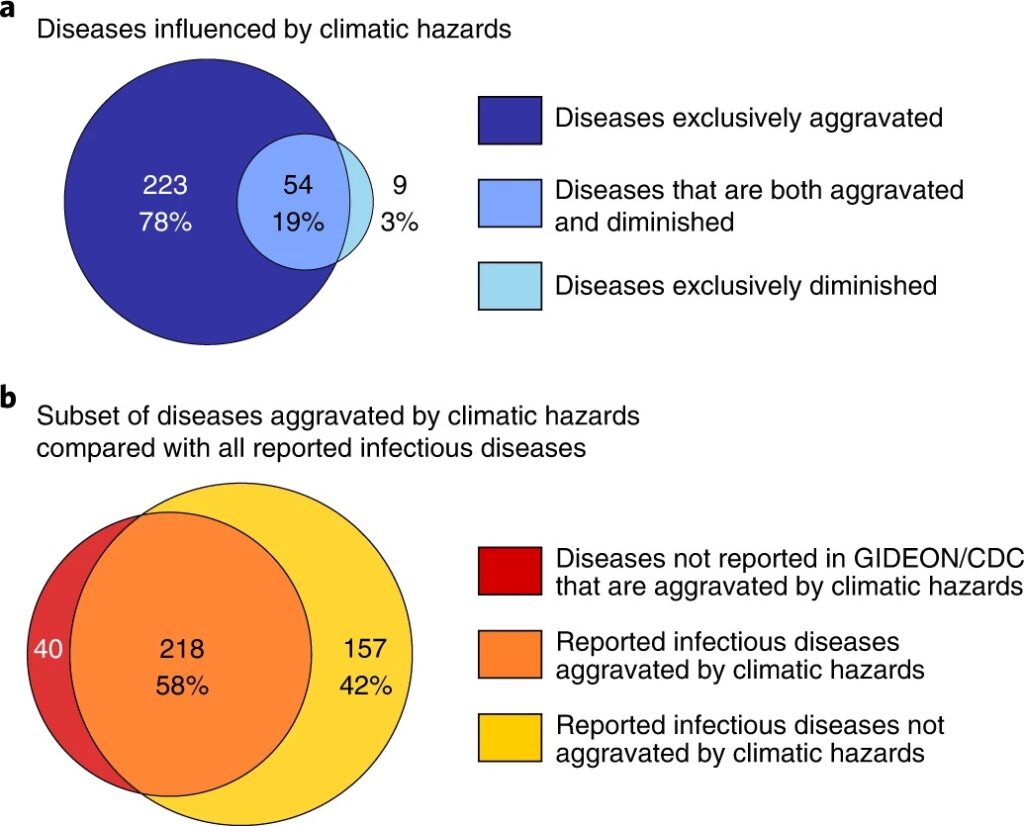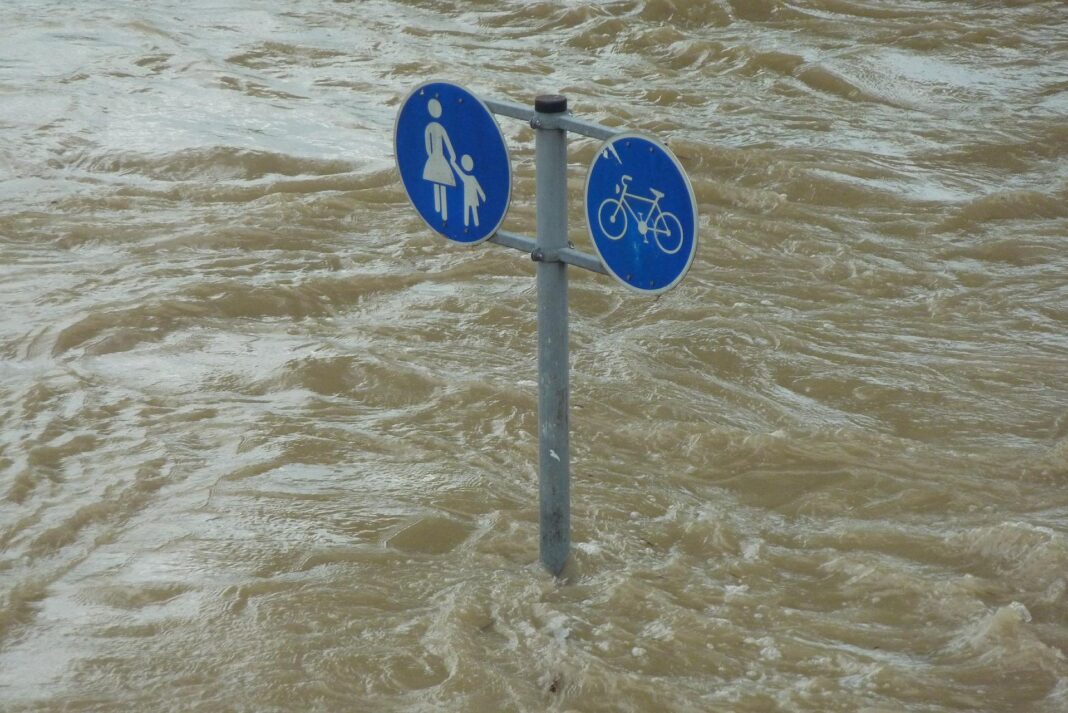A new study led by the University of Hawaii found that 58% of known infectious diseases worldwide could be aggravated by climatic hazards. The research revealed more than a thousand ways linking climate change to the occurrence of pathogenic diseases relying on different transmission types.
According to the study, published in Nature Climate Change, the best way to avoid the outbreak of these illnesses is to lower greenhouse gas emissions, the source of the problem.
Warming, heatwaves, droughts, wildfires, extreme precipitation, floods, sea level rise, and other climate phenomena are intensifying. Early studies have shown their impact on the outbreak of pandemics like Covid-19, but those analyses usually focused on one specific kind of hazard or pathogen.
Mora and his team went further and held the first complete literature screening of interactions between climatic hazards and human pathogenic diseases. They studied climate hazards; pathogens such as bacteria, viruses, plants, fungi, and protozoa; and different types of transmission such as vector-borne, airborne, and direct contact.
The study revealed that 218 pathogenic diseases from a set of 375 became more dangerous for human health because of the environmental crisis. Warmer temperatures, precipitation, and floods boosted most of the illnesses, triggered commonly by viruses and bacteria and mainly transmitted by vectors. Findings showcase the human vulnerability to pathogenic diseases linked to climate change. The complete list of the cases studied can be explored on https://camilo-mora.github.io/Diseases, a website created by the scientific team.
People closer to pathogens and pathogens closer to people
One of the most common indicators of climate change is the geographical shift of species and their pathogens. Animals go away from their ancient territories because of drought or wildfires. For instance, the breakdown of Ebola is associated with wildlife moving closer to people.
Warming and precipitation facilitate the expansion of vectors such as mosquitoes, ticks, or fleas. Furthermore, the rise in global temperature accelerates ice melting and permafrost thawing. These processes release to the environment pathogens that froze a long time ago.
Moreover, climate change brings people next to pathogens. Researchers pointed out rising cases of severe waterborne diseases, such as infections or gastroenteritis, because of the increase in water-related activities due to heatwaves.
Sometimes, the change in land use pushes people to wild areas, closer to vectors and pathogens. This could be the beginning of numerous disease outbreaks.

The weather variability also decreases the human capacity to cope with climatic hazard pathogens. For instance, some other studies suggested that outbreaks of influenza could be a consequence of rapid temperature changes. Frequent floods and hurricanes are also life-threatening hazards.
The climate crisis diminished only 63 diseases. However, researchers have claimed that while one climatic phenomenon decreases the occurrence of a disease, another or even the same hazard may aggravate it. For example, while droughts reduce the prevalence of malaria and chikungunya because of the shrinking of breeding grounds, the lack of water also increases mosquito density in the reduced water pools.

The team advises implementing urgent and aggressive actions to mitigate the ongoing emission of greenhouse gasses. Right policies at the right time would avoid the outbreak of diseases with the capacity to infect and kill large numbers of people and its broad socioeconomic consequences.
References
Mora, C., McKenzie, T., Gaw, I.M. et al. (2022). Over half of known human pathogenic diseases can be aggravated by climate change. Nat. Clim. Chang. https://doi.org/10.1038/s41558-022-01426-1
Patz, J. A., Campbell-Lendrum, D., Holloway, T., & Foley, J. A. (2005, November). Impact of regional climate change on human health. Nature, 438(7066), 310–317. https://doi.org/10.1038/nature04188
Liu, Q., Tan, Z. M., Sun, J., Hou, Y., Fu, C., & Wu, Z. (2020, March 13). Changing rapid weather variability increases influenza epidemic risk in a warming climate. Environmental Research Letters, 15(4), 044004. https://doi.org/10.1088/1748-9326/ab70bc



